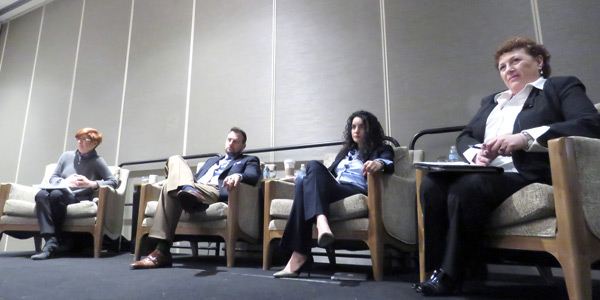By Rich Heidorn Jr.
WASHINGTON — Electric vehicles and distributed energy resources are increasing the need for utilities to experiment and conduct market research, speakers at an Institute for Electric Innovation forum said last week.
“What differentiates us from every other competitive service is we have an … obligation to serve 100% of the customers. We don’t have the ability to define our niche market and confine our advertising to that market,” said Karen Lefkowitz, vice president of smart grid and technology for Pepco Holdings Inc. “Serving 100% of the customers used to be easy because everybody had the same stuff. … Now things have gotten really complicated, because now we actually have to understand our customers.”
Regional Preferences
When Pepco rolled out smart meters at its utilities in D.C., Maryland and Delaware, Lefkowitz said, the company tested avatars for a video series explaining how customers could use the data collected by the devices. To the company’s surprise, different regions preferred different avatars, Lefkowitz said.

“It tells us that customers’ opinions and their attitudes can be vastly different in a relatively short geographic difference. They’re influenced by incentives their states are offering; they’re influenced by the culture of the community that they live in. They’re influenced by the rate that the local utility is charging. So when we look to the future and see all the choices that customers have … we need to understand what drives the customer. We need to understand what appeals to them, and we need to understand why they’re looking elsewhere for their services.”
“I think you always want to be experimenting,” agreed Arizona Corporation Commission Chairman Tom Forese. “Focus groups and polling data … could be very helpful in understanding the needs of the customers. Nothing really can compensate for just raw experimentation because pollsters are always shocked and surprised: ‘We didn’t see that coming.’”
Exceeding Storage Mandates

Manal Yamout, vice president of policy and markets for Advanced Microgrid Solutions, recalled when the California Public Utilities Commission ordered Southern California Edison to obtain 50 MW of 15-minute storage in response to the shutdown of the San Onofre nuclear plant. The company ended up procuring 250 MW of storage with a four-hour output.
“Why would they do that? They didn’t have to,” Yamout said. “The answer is that, unexpectedly, distributed storage resources had the ability to give Edison something it didn’t quite know it wanted until it had to think about it.”
Although it was the storage target that caused the procurement, it was the multiple functions storage could fill that led the company to exceed the target, she said.

“I think we’re in a place in the elect power industry that’s … like the beginning of the Internet, where serious policy and regulatory change has to occur to let things explode,” said moderator and IEI Executive Director Lisa Wood, quoting from a book by AOL founder Steve Case.
“Our regulators are in a tough place. The world is changing very fast,” said Lefkowitz. “For the very first time, they’re now adjudicating between who should have the ability to put assets on the electric system that historically has been the domain of the utility.”
Forese said he believes the utility must retain a central role. “If the utility is not directing traffic for new technologies, then I think we’ll get the opposite of what we’re trying to accomplish,” he said.
EVs’ Impact
Lefkowitz predicted electric vehicles will “change the world” but said it won’t happen quickly because it takes about 15 years for the entire vehicle fleet to be replaced with newer models. (See columnist Steve Huntoon’s alternate view, Electric Cars – Three Ugly Facts.)

Time will be essential in ensuring Pepco is “ahead of the curve,” Lefkowitz said: Charging an EV requires the equivalent of half of a house load.
“If we don’t size our distribution transformers appropriately and everybody comes home to the neighborhood and charges their car at the same time, we’re going to at minimum blow the fuses on all those distribution transformers — we’ll be spending a lot of time driving around to replace fuses. And at worst, we’re going to be spending trillions of dollars across the nation upgrading transformers.”
Lefkowitz said EVs will change Pepco’s peak load in the D.C. area from 4-5 p.m. to perhaps 7-8 p.m.
“So our planning has to be a lot more expansive and future-looking and rely a lot less on 100% history that no longer is necessarily a good predictor.”
She predicted an expansion of Pepco’s incentives to encourage off-peak charging, saying a pilot program in Maryland proved very popular.
“We’ve been talking about [time-of-use] tariffs and the right pricing for three decades,” Wood said. “But EVs may be the thing that actually brings that to life.”



